What is Autism
- What is autism?
- Fact and fiction
- Prevalence of autism
- History
- The triad of impairments
What causes autism?
Medical conditions that may cause autism
How is autism diagnosed?
Related conditions
Which professionals is a person with autism likely to meet and what do they do?
What techniques are used to treat autism?
My child has just been diagnosed. What should I do ?
What is autism?
Autism is a lifelong developmental condition which affects the way a person communicates and relates to other people. More recently, a wide range of associated conditions have been linked with autism leading to the rise of the terms Autistic Spectrum and Autistic Continuum. However, all those affected do tend to show three common characteristics (known as the Triad of Impairments) :-
-
Difficulties with Speech, Language and Nonverbal Communication – The main problem is not that the child cannot talk (although a small proportion never develop speech) but that they have difficulties in communicating. In otherwords, even people who have relatively normal language development can find it difficult to initiate conversations, reply appropriately and volunteer information. A child can often repeat perfectly what has been said (known as echolalia) but cannot use the same words in another situation (either immediately or later) to request something. The same sort of problem also exists with physical responses (known as echopraxia).
-
Difficulties with Social Interaction – People (particularly children) with autism often have difficulties initiating and sustaining relationships with their peers. It is often the case that children with autism can relate well to their parents and carers but not to other children. This is because, as adults, we can usually anticipate the needs of a child. Since other children do not have this ability, the autistic child struggles to interact with his/her peers. It is not that autistic children cannot make friends but often just do not know how. Teaching an autistic child social skills is critical to their development.
-
Difficulties with imagination and inner language – Imaginary play (such as pretending a doll is a baby or a toy car is a real car) is a very important part of a child’s development. Children with autism rarely show such imaginary play thus their development is hindered. People with autism also tend to have problems in understanding how other people are feeling or interpreting facial expressions.
-
A number of terms and labels are used for children and adults who fall within the autistic spectrum (such as Pervasive Developmental Disorder, Asperger’s Syndrome, Autism, Heller’s Syndrome and Semantic-Pragmatic Disorder) and a wide range of apparently related medical conditions. There is currently a divergence of opinion concerning whether these associated medical conditions are different causes of autism, as argued by Gillberg & Coleman, or are parallel phenomena to a common core genetic mechanism as has been advocated by the Institute of Psychiatry group in London.
Fact and Fiction
Whilst autism, as a term, was only defined 50 years ago, it has probably been a part of the human condition thoughout history. However, newly defined disorders inevitably lead to confusion, so here are a few pointers to what autism is and what it is not:
Autism is …
-
A pervasive developmental disorder involving a biological or organic defect in the functioning of the brain;
-
Occurs in four times as many males as females;
-
A spectrum disorder – comprising individuals with profound learning difficulties through to people with average or above average IQ;
-
Associated with known organic causes e.g. maternal rubella, tuberous sclerosis;
-
Associated with epilepsy or seizure disorders in one third of individuals at adolescence;
-
In many cases genetically linked;
-
Associated with unusual responses to sensory stimuli;
-
A life-long disability with a need for life-long support in most cases.
Autism is not …
-
The result of emotional deprivation or emotional stress;
-
A wilful desire to avoid social contact;
-
Due in any way to parental rejection or cold parenting;
-
In any way class related;
-
A mental illness;
-
Misunderstood genius (although in a few circumstances some individuals have special abilities in narrow areas);
-
Curable (although improvements can be made in all cases).
Prevalence of autism
The inevitable question all people ask is ‘how common is autism’? However, comprehensive, statistically significant, surveys are not all that common. The most cited statistic is that autism occurs in 5 out of 10,000 live births. However, this figure only focuses on the ‘classic’ type of autism known as Kanner Syndrome (see history section). Given that it is widely accepted that autism is a spectrum disorder researchers have shown that prevalence rates may be as high as 91 in 10,000 (click here to see prevalence rates in the UK).
Interestingly, estimates on the prevalence of autism vary considerably depending on the country, ranging from 2 out of 10,000 in Germany to as high as 16 out of 10,000 in Japan. This variation is almost certainly due to differing diagnostic criteria although genetic factors, and/or environmental influences may have an influence as yet unknown.
History
Is autism new?
Whilst autism is a term coined in the 20 th Century it is not a new phenomenon. The two examples that follow illustrate that autism has, almost certainly been present though-out history.
Brother Juniper
Although Saint Francis of Assisi died in 1226 the first English translation of the Fioretti di Santo Francesco d’Ascesi, (Little Flowers of St Francis) only appeared in 1864. This most spirited and racy of Italian classics introduces the reader to selected miracles of Saint Francis and his earliest disciples. One of his chosen disciples was Brother Juniper, a man who many later researchers have suggested displayed many of the classic attributes of a person with autism. Here are a few examples of his actions, which indicate that he was a person with autism.
Brother Juniper and the pigs foot
When visiting a sick brother the man asked Brother Juniper ‘thou wouldst give me great consolation if thou couldst get me a pig’s foot to eat’ whereupon Brother Juniper went into the forest, where many swine were feeding, and having caught one, he cut off one of its feet and ran off with it, leaving the swine with its foot cut off; and coming back to the convent, he carefully washed the foot, and diligently prepared and cooked it. This literal interpretation of a request is common in people with autism.
Brother Juniper and the see-saw
On entering Rome, his fame attracted the attention of a large crowd. Brother Juniper, obviously puzzled, and probably frightened by this turn of events, caught sight of two children playing on a see-saw and joined them in their play. As the now assembled crowd waited for him to stop, Brother Juniper took no notice but instead gave his whole attention to his see-sawing. This apparent stereotypical behaviour seemed a response to an unusual and frightening sequence of events -again behaviour traits common in people with autism.
How Brother Juniper fell into an ecstasy
In chapter XII of the Little Flowers of St Francis the following was reported:
‘As Brother Juniper was one day hearing Mass with great devotion, he fell into an ecstasy, and so continued for a long space of time. And when he came to himself, he said with great fervour of spirit to the other friars: ‘Oh, my brethren, who is there in this world so noble that he would disdain to carry a basket of mud all the world over, in the hope of obtaining a house full of gold?’
Of course with the passage of so much time it’s impossible to know exactly what caused the ‘ecstasy’ but perhaps this was the result of an epileptic seizure? Another condition known to be associated with autism.
The Wild Boy of Aveyron
It wasn’t until the 19 th century that anyone seriously started to study a person displaying the triad of impairment that characterizes a person with autism (although it was too early for them to recognise it as such).
In January 1801, a French Doctor, Jean-Marc-Garpard Itard was given charge of a boy of about 12 years old who had been found living wild in the woods. The child, subsequently named Victor was mute and thought to have been isolated from human contact from an early age. Victor displayed the following characteristics that suggest very strongly that he was autistic:
• He never learned to speak;
• He had a ‘decided taste for order’;
• He pulled people towards objects that he wanted to use;
• He would not play with toys in any constructive manner;
• Itard also noted that whilst he could instruct Victor into how to behave in a social context when that context was repeated in a different location he would revert to his previous behaviour.
Through his work with Victor, Jean-Marc Gaspard Itard became known as the father of special education. He was the first to delve into the task of teaching a child who was ‘different’. For many years after Itard, more educators and psychologists became interested in making people like Victor become a functional part of society. In fact his ideas were passed on via his student Edouard Seguin to Maria Montessori and still to this day influence methods of special education.
Leo Kanner
Up until the 1940’s there had been much work looking at individual people and describing their conditions. It was only in the first part of the 20 th Century that researchers began to look at groups of children and compare their behavioural traits and to look at any similarities.
Leo Kanner, a psychiatrist at Johns Hopkins University in the US, recognised that a number of children sent to his clinic displayed similar characteristics which he named ‘early infantile autism’ the word autism deriving from the Greek for ‘self’.
Although he described in detail the characteristics of 11 children he saw between September 1931 and February 1943, there were certain features that were universal and he selected those as crucial for diagnosis, they were:
• A profound lack of affective (emotional) contact with other people;
• Intense insistence on sameness in their routines;
• Muteness or abnormality of speech;
• Fascination with manipulating objects;
• High levels of visuo-spatial skills or rote memory but major learning difficulties in other areas;
• An attractive, alert, intelligent appearance.
Kanner’s pioneering work was slow to catch on but is now the focus of much international research work.
Hans Asperger
A Viennese physician, Hans Asperger, working at the same time as Leo Kanner published a paper which described a pattern of behaviours in several young boys who had normal intelligence and language development, but who also exhibited autistic-like behaviours and marked deficiencies in social and communication skills.
Asperger noted the similarities to Kanner’s Syndrome but also observed some major differences:
• Whilst Kanner reported that 3 of his 11 patients did not speak at all, and the remainder rarely used language to communicate, Asperger noted that his case study patients spoke ‘like little adults’;
• There were also disagreements regarding gross coordination and fine motor skills. Kanner reported that whilst the former was poor the latter was very good whilst Asperger observed that both were affected;
• Kanner believed that learning by rote would be the best method of advancing an autistic person whilst Asperger suggested that his patients were ‘abstract thinkers’ and therefore performed best spontaneously.
Modern thinking and approaches
It was not until the extensive research work of Lorna Wing and Judith Gould in Camberwell (UK) that it became apparent that both the diagnoses of Kanner and Asperger were accurate. By examining a large sample of children on one area of London, Wing and Gould were able to show that Kanner’s Syndrome and Asperger’s Syndrome were both part of a wide range of disorders affecting social interaction and communication. This led to the notion of ‘autistic spectrum disorders’ and to the idea of a ‘triad of impairment’ – it is to this that we now turn.
The triad of impairments
1. Impairments of social interaction
The aloof group
This is to most common type of social impairment. Behaviour may include:
• Behaving as if other people do not exist;
• Little or no eye contact made;
• No response when spoken to;
• Faces empty of expression except with extreme joy, anger or distress;
• No response to cuddling;
• If something is wanted, carers hands may be pulled towards the object;
• May respond to rough and tumble play well, but when this stops return to aloof pattern;
• Seem to ‘be in a world of their own’.
The passive group
Least common group, features include:
• The child accepts social approaches;
• May meet the gaze of others;
• May become involved as a passive part of a game.
The active but odd group
Children of this group make active approaches to others but make that contact in strange ways, including:
• Paying no attention to the other party;
• Poor eye contact although sometimes may stare too long;
• May hug or shake hands too hard.
The over-formal, stilted group
Seen in later life this behaviour is common in the most able person with autism. The following characteristics tend to be displayed:
• Excessively polite and formal;
• Have a good level of language;
• Try very hard to stick to the rules of social interaction without really understanding them.
2. Impairments of communication
Using speech
Kanner highlighted the delay or absence of speech in his diagnosis. Use of speech varies from not at all (in 20% of cases) to a very good level of language. Common speech problems include:
• Repeating words spoken to them (echolalia);
• Asking for things by repeating a phrase they associate with the action e.g. ‘Do you want a cup of tea’ instead of ‘I want a cup of tea’;
• Missing linking words out of sentences such as ‘in’ ‘on’ ‘because’ ‘under’ so for example a child may say ‘go car shop’ missing out the joining words;
• Explaining in greater detail than is necessary;
• Long replies to questions spoken as if learnt from a book.
Understanding speech
So as speech varies so does understanding of speech. Even in the worst cases most people with autism can understand some speech. Difficulties arise in a number of situations:
• When objects have more than one name such as a bowl (washing up or eating from?);
• Confusion between the sound of a word e.g. meet and meat;
• Literal interpretation can be problematic, imagine if you took phrases like ‘it’s raining cats and dogs’ or ‘have you lost your tongue’ literally;
• Humour, especially that which relates to verbal ambiguity can be difficult for a person with autism;
Intonation and voice control
There are a number of characteristics that relate to the way speech is made which can be found in a person with autism, these include:
• Problems with volume – sometimes to loud often to quiet;
• The voice may sound mechanical or monotonous;
• Words enunciation can be over-emphasised.
Using and understanding non-verbal communication
Speech is only one of a variety of ways in which people communicate, all sorts of gestures accompany speech including subtle eye movements, arm and hand movements and posture changes. People who are not autistic but have an impairment in, say, speech are able to use other ways of communicating. However people with autism have a fundamental impairment in communication, which goes beyond just speech.
Thus a person with autism is unlikely to develop additional communication skills and whilst some of the more severely impaired can learn some manual sign language they will never use them spontaneously.
3. Impairments of imagination
As we have already seen one of the characteristics of autism is the inability to play or create imaginative activities. So a toy truck becomes a play thing only in as much as the spinning of a wheel provides stimulation. Some more able people with autism develop a sequence of events which appear to be play but close observation shows the sequence is often repeated over and over again.
The lack of imaginative play leads on to limited or no understanding of other people’s emotions so people with autism find difficulty in sharing happiness or sorrow with others. Many people with autism find their pleasure in special interests.
Repetitive stereotyped activities
Many people with autism display stereotyped activities these range from the simple such as:
• Tasting, smelling, feeling or tapping different surfaces;
• Listening to mechanical noises such as washing machines;
• Switching lights on and off;
• Spinning objects,
• Head banging;
These simple stereotypies may last until adulthood, more complex stereotyped behaviours include:
• A complex sequence of bodily movements;
• Placing objects in long lines that cannot be moved;
• Extensive bedtime routines;
• The family sitting in exactly the same places at mealtimes;
• Attachment to strange objects such as pieces of string or leaves;
• Collecting strange objects such as tins of polish;
• In more able people with autism fascination with the weather, timetables, train numbers, etc etc may be found.
Many of the above do not extend into adulthood however fascination with numbers and sequences can often continue.
4. Other features
Lorna Wing observes a number of additional features which in themselves are not universal and not critical for diagnosis. These include:
• Stereotyped movements – such as finger flapping, arm waving, jumping, head rolling and walking on tiptoe;
• Abnormalities of gait and posture are sometimes seen – where the child may not swing his/her arms properly when walking, may hold their hands out when walking or may bend their fingers or arms in unusual ways;
• The person with autism may have marked difficulties with physical education and games. This is especially the case with team sports.
5. Responses to sensory stimuli
People with autism may react to sound and visual stimuli in unusual ways:
• A person with autism may not react to a very loud noise but will respond to a favorite theme tune or a food being prepared;
• Some children with autism can display unusual abilities to move and find objects in near darkness and some may show distress when exposed to very bright lights;
• Sensitivities to smell, taste and certain textures have been noticed and some people with autism display indifference to pain;
• Food difficulties can occur, such as the child who would only eat white coloured food.
6. Inappropriate behaviour
Inappropriate, difficult behaviour is frequent in children with autism, this may manifest itself in a number of ways:
• Confusion and fear of unfamiliar circumstances;
• Restlessness, destructive and aggressive behaviour can occur;
• Screaming in public can happen as can temper tantrums;
• People with autism will not lie so if they see what they consider to be an ugly baby or a very short person theymay well point this out!
What causes autism?
Psychogenic theory discredited
Early in the 1960’s, only a few years after Kanner and Asperger had defined parts of the autistic spectrum, the psychogenic theory of autism gained ground. This theory, now totally unsupported, suggested (with little evidence) that the way parents brought up their children could actually ‘cause’ autism. Some even went as far as suggesting those children should be removed from their parents as a part of their treatment.
Growing knowledge
Later in the 1960’s research into the way the brain functioned and the how the process of brain development can go wrong pre- and post-natal started to show that autism was indeed a spectrum of conditions and that they are disorders of development.
So what causes autism?
Once researchers had dismissed emotional causes for autism it became apparent that there must be a biological origin to the disorder. There were a number of powerful indicators for a biological cause:
1. Autism is often accompanied by other neurological symptoms;
2. Autism is often associated with other learning difficulties;
3. Autism is often accompanied by epilepsy;
4. Mothers of autistic people often report difficulties in pregnancy and labour;
5. Other conditions such as viral infections, metabolic conditions and genetic abnormality are closely related to autistic spectrum disorders.
Armed with this theory researchers were then faced with the prospect of trying to isolate ‘the’ cause. However, it became apparent very quickly that one single biological cause was unlikely. After all there are many people with autism who do not have any apparent medical condition likely to have caused the disorder, and who have no learning difficulties and are not epileptic!
However, when studies were made of groups of children with autism, researchers noted that a greater number of certain types of medical conditions were found when compared to groups of children who were not diagnosed as autistic. Thus the implication was clear – in all cases of people with autism a biological cause lies behind the disorder, although the nature of this cause is only identifiable in a minority of cases.
What parts of the brain are affected?
Before we look at the potential medical conditions that can lead to autism, it is worth looking at the evidence for neurological abnormalities. It is also important to note that ‘brain damage’ is an emotive term in itself. Many people with autism look quite ordinary so how is it possible that damage has occurred? The answer is that we don’t know, or more precisely we don’t know yet. The tools we have available to analyse are relatively crude compared to the immense complexity of the brain.
Nevertheless brain abnormalities are often found in people with autism and it is assumed that those that do not have observable anomalies are simply outside the range of what today’s science can detect.
The evidence
At present various techniques are used to obtain pictures of the brain including СÐТ (Computer Axial Tomography) scans and MRI (Magnetic Resonance Imaging) scans. Several studies have revealed abnormalities in different regions of the brain. The following areas have been highlighted for special attention:
- Abnormalities in the frontal lobes – areas in the brain responsible for planing and control
- Abnormalities in the limbic system – the part of the brain responsible for emotional regulation
- Abnormalities in the brain stem and fourth ventricle or in the cerebellum – which governs motor coordination
What all this research shows is that in many cases brain anomalies are associated with people with autism. Brain research has also shown that between 30 and 50% of children with autism have abnormally high levels of serotonin in the blood, a chemical responsible for transmitting signals in nerve cells. Continued research in these areas will further refine our knowledge of what parts of the brain are affected in people with autism. Let’s take one step back and look at what may have caused this damage in the first place.
Medical conditions that may cause autism
The following lists the medical conditions that have been identified in some children with autism:
- Genetic conditions;
- Viral infections;
- Metabolic conditions; and
- Congenital anomaly syndromes.
Genetic conditions
Studies of identical twins (sharing identical genetic material) and non-identical twins (sharing half their brothers or sisters genes) have shown an increased prevalence of autism in identical rather than non-identical twins. This shows a clear genetic link, however even with identical twins there are recorded cases of just one sibling with autism. There are also some rare genetic conditions that sometimes give rise to autism these include:
• Tuberous sclerosis – a conditions characterised by unusual skin pigmentation, a facial rash and growth of tumours on the brain – commonly leading to autism;
• Fragile X syndrome – one of the commonest causes of autism yet identified – this condition leads to learning difficulties and unusual facial appearance (large ears, long nose and high forehead).
Does autism run in families?
About 2-3% of brothers and sisters also develop autism. This is higher than you would expect by chance, reinforcing the genetic link to the disorder.
Do difficult pregnancies and births cause autism?
The jury is still out on this one. Difficulties in birth are of course responsible for brain damage. However, only in a very small minority of cases does the child develop autism. Also it is reasonable to suggest that the difficulty in birth may be a by-product of the fact that the child already has some form of abnormality.
Infection as a cause of autism
It is rational to assume that if autism has a biological origin, and that origin lies in damage to a certain region of the brain, then a virus which can affect the brain may result in autism. Therefore the following viral illnesses have been linked:
• Rubella – if contracted in the first 3 months of pregnancy the unborn baby’s brain can be damaged resulting in a range of problems including autism. However, in many countries vaccination programmes have made this much rarer.
• Herpes encephalitis – this virus can affect infant’s brains leading to encephalitis. Children so affected can display an autistic-like condition.
In summary then
As we have seen, much recent research reveals a link between autism and abnormalities in the brain. If the agent of damage affects those regions of the brain responsible for social interaction, social communication and imagination it is possible that the triad of impairment will result and the person will develop the disorder.
However the exact causes are not known so the notion of a ‘final common pathway’ has been proposed:
This suggests that a variety of medical conditions can lead to brain damage, and if critical parts of the brain are affected then the individual may display the typical features of autism.
How is autism diagnosed?
There are various diagnostic systems used in classification. Most commonly, clinicians will base their criteria on the ICD-10 advocated by the World Health Organisation, or the DSM-IV criteria used by the American Academy of Child and Adolescent Psychiatry. In contrast to earlier systems, it is perhaps reassuring that there is a high degree of correspondence in the current criteria used in the two systems. The UK in general tends to use the ICD-10 system.
Many local authorities in the UK are now using the CHAT (Checklist for Autism in Toddlers developed by Baron-Cohen, Allen and Gillberg 1992) scale to screen for autism at 18 months. This is a set of 9 ‘yes/no’ questions which are put to the parents. Research has shown that this test reliably detects the majority of children with core autism.
Other local authorities will use different techniques to diagnose autism at a pre-school age. These include Autism Diagnostic Observation Schedule (ADOS, Lord et al. 1989) – This is a developmental test which involves the examiner interacting with the child for 20-30 minutes. Eight tasks are carried out to ascertain certain behaviours.
Autism Diagnostic Interview(ADI) (leCouteur & Rutter) is the carer interview schedule which complements the ADOS. It takes about 1-2 hours to complete.
Childhood Autism Rating Scale (CARS, Schopler, Reichler, DeVillis and Kock 1980) – This test is carried out using direct observations of the child and involves 15 scales (eg. impairment of human relationships, peculiarities in relating to non-human objects etc) each of which have 7 potential scores (normal to severe).
Vineland – is a general rating scale, used as the basis for an interview, which gives an overview of the person’s abilities. It takes 20-60 minutes to complete.
E2 – This is a diagnostic checklist containing a large number of questions. The completed form is sent to the Autistic Research Institute in San Diego where it is entered into a large research database and compared to previously collected data. This gives an indication of severity of autism compared to their case data.
DIAGNOSTIC CRITERIA FOR AUTISM DISORDER (ICD-10) (WHO 1992)
At least 8 of the 16 specified items must be fulfilled.
a. Qualitative impairments in reciprocal social interaction, as manifested by at least three of the following five:
1. failure adequately to use eye-to-eye gaze, facial expression, body posture and gesture to regulate social interaction.
2. failure to develop peer relationships.
3. rarely seeking and using other people for comfort and affection at times of stress or distress and/or offering comfort and affection to others when they are showing distress or unhappiness.
4. lack of shared enjoyment in terms of vicarious pleasure in other peoples’ happiness and/or spontaneous seeking to share their own enjoyment through joint involvement with others.
5. lack of socio-emotional reciprocity.
b. Qualitative impairments in communication:
1. lack of social usage of whatever language skills are present.
2. impairment in make-believe and social imitative play.
3. poor synchrony and lack of reciprocity in conversational interchange.
4. poor flexibility in language expression and a relative lack of creativity and fantasy in thought processes.
5. lack of emotional response to other peoples’ verbal and non-verbal overtures.
6. impaired use of variations in cadence or emphasis to reflect communicative modulation.
7. lack of accompanying gesture to provide emphasis or aid meaning in spoken communication.
c. Restricted, repetitive and stereotyped patterns of behaviour, interests and activities, as manifested by ate least two of the following six:
1. encompassing preoccupation with stereotyped and restricted patterns of interest.
2. specific attachments to unusual objects.
3. apparently compulsive adherence to specific, non-functional routines or rituals.
4. stereotyped and repetitive motor mannerisms.
5. preoccupations with part-objects or non-functional elements of play material.
6. distress over changes in small, non-functional details of the environment.
d. Developmental abnormalities must have been present in the first three years for the diagnosis to be made.
DIAGNOSTIC CRITERIA FOR AUTISTIC DISORDER (DSM-IV)
A. A total of six (or more) items from (1), (2), and (3), with at least two from (1), and one each from (2) and (3).
1. Qualitative impairment in social interaction, as manifested by at least two of the following:
a. marked impairment in the use of multiple nonverbal behaviours such as eye-to-eye gaze, facial expression,
body postures, and gestures, to regulate social interaction.
b. failure to develop peer relationships appropriate to developmental level.
c. a lack of spontaneous seeking to share enjoyment, interests or achievements with other people e.g.: by a lack of showing, bringing or pointing out objects of interest.
d. lack of social or emotional reciprocity.
2. Qualitative impairments in communication as manifested by at least one of the following:
a. delay in, or total lack of, the development of spoken language not accompanied by an attempt to compensate through alternative modes of communication such as gesture or mime.
b. in individuals with adequate speech, marked impairment in the ability to initiate or sustain a conversation with others.
c. lack of varied, spontaneous, make-believe play or social imitative play appropriate to developmental level.
3. Restricted, repetitive and stereotyped patterns of behaviour, interests and activities, as manifested by at least one of the following:
a. encompassing preoccupation with one or more stereotyped and restricted patterns of interest that is abnormal either in intensity or focus.
b. apparently inflexible adherence to specific nonfunctional routines or rituals.
c. stereotyped and repetitive motor mannerisms e.g.: hand or finger flapping or twisting, or complex whole-body movements.
d. persistent preoccupation with parts of objects.
B. Delays or abnormal functioning in at least one of the following areas, with onset prior to age 3 years:
1. social interaction.
2. language as used in social communication.
3. symbolic or imaginative play.
C. The disturbance is not better accounted for by Rett’s Disorder or Childhood Disintegrative Disorder.
Diagnosis is difficult for a practitioner with limited training or exposure to autism, since the characteristics of the disorder vary so much. Locating a medical specialist or a diagnostician who has experience with autism is most important. Ideally a child should be evaluated by a multidisciplinary team which may include a neurologist, psy-chologist, developmental pediatrician, speech/language therapist, learning consultant or other professionals knowledgeable about autism.
The process of assessment
The basic principles of assessment involve the following two procedures:
1. An assessment in a clinic which will involve various specialist investigations into intelligence, language, medical and neurological examinations; and
2. More often than not a second assessment will take place by observing the person with autism at home, school or nursery, during play and other situations where social interaction and communication would be seen.
This procedure is likely to take some time as careful assessment will help to identify whether the individual has another similar condition such as Rett’s syndrome (in which girls show neurological problems such as hand-wringing and other odd hand movements) or Landau-Kleffner syndrome (a condition characterised by a period of normal language development followed by a fluctuating loss of speech and accompanied by epilepsy).
Not only is it important to distinguish autism from other conditions but also an accurate diagnosis can provide the basis for building an appropriate and effective educational and treatment program.
There are still some grey areas in diagnosing autism, so that terms such as ‘atypical autism’ (where perhaps some of the classic features did not appear until after the age of 3) and ‘autistic features’ (where some, but not all, of the features are present) may be used.
The age of diagnosis
Many people at the more able end of the autistic spectrum can go through their lives without a diagnosis. Most people would argue that an early diagnosis is most beneficial and allows for appropriate action to be taken. It may not always be possible to diagnose a person with autism before the age of two, the child may have associated learning difficulties and, as speech and language development is naturally variable, using this as a diagnostic tool may not work.
How will my local doctors go about making a diagnosis?
Autistic spectrum disorders are diagnosed on the basis of behaviour and not as a result of any specific medical test.
The procedure for diagnosing your child can vary greatly depending on which local authority you belong to (and it can also vary even within an authority). This is because autism is still a relatively unknown condition and is also rare. The procedure may also differ depending on whether your child is being checked for the first time or if they have a previous condition (eg. Hyperactivity, Fragile-X). A typical situation would be where a child is picked up at an eighteen or twenty-four month checkup as having developmental problems. This checkup is normally carried out by your local GP in conjunction with a health visitor. At this stage, your child will probably be referred to a specialist doctor at a local hospital.
Various medical tests can be carried out at this stage (blood tests, brain tests, hearing tests) but a test for early identification of children at ‘high risk’ of developing autism (CHAT) is also starting to be introduced.
Although the majority of children with ‘core autism’ are detected in the pre-school years, many of those with ‘autistic spectrum disorders’ such as Aspergers Syndrome are only picked up at a later stage, often because of concerns over unpredictable, ‘eccentric’ or challenging behaviour.
A diagnosis for autism can take a long time due to the complicated nature of the condition. A diagnosis of “autistic tendencies” is often made because the child does not seem to fit all the criteria for autism. During or after a diagnosis other professionals may be introduced (perhaps a speech therapist or educational psychologist) in order to help the child’s development (and perhaps to further the diagnosis).
Related conditions
Introduction
There are many conditions that are associated with autistic spectrum disorders. The purpose of this part of About Autism is to highlight some of the common ones and, where possible, link people to societies, groups or further information resources that can provide additional support. It is important to note that all children at some stage in development may exhibit behaviour that is similar to that seen in a person with autism.
Temper tantrums, late speech development, arm flapping when excited, food fads etc are all part of many peoples early development. However, the person with autism has a triad of impairments which must all be present for diagnosis: impairments of social interaction, communication and imagi-nation. The triad cannot be explained away by another disability. Thus the following associated conditions are in addition to the diagnosis of autism not a replacement for it.
Learning difficulties
When considering the whole spectrum of autism including Asperger’s syndrome about one third have additional learning difficulties. Most diagnosed with Asperger’s have IQ’s in the low average or better range. Of those with Kanner syndrome about two thirds have severe to mild difficulties and one third are in the low average or better range.
Rett’s syndrome
Rett syndrome is a neurological disorder occurring only in girls, in which individuals exhibit reduced muscle tone, autistic-like behaviour, stereotyped hand movements consisting mainly of wringing and waving, loss of purposeful use of the hands, diminished ability to express feelings, avoidance of eye contact, a lag in brain and head growth, gait abnormalities and seizures. Hypotonia (loss of muscle tone) is usually the first symptom.
The syndrome was first recognized in 1966 by Dr. Andreas Rett, however it was not until a paper was published by Dr. Bengt Hagberg in 1983 that the disorder was made widely known in medical circles. The syndrome affects approximately 1 in every 10,000-15,000 live female births, with symptoms usually appearing in early childhood. The cause of Rett syndrome is unknown.
Diagnosis: At present diagnosis depends on observation of a child’s early growth and development and on an ongoing assessment of medical history and physical and neurological status. In the case of an adult a review of the same would apply.
As yet there are no laboratory tests which can confirm the clinical diagnosis. A paediatric neurologist and/or a developmental paediatrician should be consulted for confirmation.
Essential criteria for diagnosis include:
1. Apparently normal pregnancy and delivery, with development of voluntary movements until between 6-18 months.
2. Normal head circumference at birth followed by a slowing of head growth between 6-48 months.
3. Unexplained loss of acquired purposeful hand skills between the ages of 5-30 months accompanied by communication malfunction and social withdrawal.
4. Development of severely impaired speech and understanding of language accompanied by severe retardation of intellectual development.
5. Loss of learned behavioural, social and voluntary motor skills.
6. A fixed pattern of hand movements such as wringing, squeezing, clapping, tapping, washing, rubbing and mouthing, which can become almost constant while awake. Pattern appears after loss of purposeful hand skills.
7. Appearance between 1-4 years of a shuffling or jerky gait with fixing or locking of joints into one position so reducing the ability to move from one position to another. (Only about half of the girls with this Syndrome are ever able to walk independently in order show this criterion).
8. Shakiness of the torso, and also of the limbs, when the child is upset or agitated.
9. Diagnosis usually tentative until 2-5 years of age.
Fragile X syndrome
Fragile X syndrome (FXS) is now the most common known inherited cause of developmental disabilities, but was not discovered until the late 1970s. By 1980 it was found that people showing certain mental and physical characteristics had a chromosomal abnormality caused by a partial break on an X chromosome, called a “fragile site”. In 1991 the Fragile X gene was identified within this site. FXS is named after a site on the long arm of the X chromosome that is elongated and appears partly broken or ‘fragile’.
The spectrum of Fragile X syndrome ranges from normal development to developmental delay, learning disabili-ties, mild to severe intellectual disability, autistic-like behaviour and attentional problems. The majority of children are mildly to moderately affected. Genetic testing has changed the approach to the diagnosis of the condition because there is now a reliable and relatively simple blood detection test which is available to all children with developmental delay of unknown cause.
Incidence: Estimates suggest about 1 in 4,000 males are affected and that about 1 in 1,000 females carry the gene. Many affected family members are unaware of the genetic cause and have yet to be diagnosed.
Diagnosis: The clinical features of Fragile X syndrome include physical, developmental and behavioural characteristics and range from normal through mild to severe in presentation. Intellectual disability (IQ less than 70) is present in 80% of males and 50% of females. Children may have been labeled as having pervasive developmental disorder, Asperger’s syndrome, autistic spectrum disorder, learning disability or developmental delay. Physical, developmental and behavioural characteristics include:
Physical: The classic features include:
• Elongated face with prominent jaw, which is more obvious after puberty.
• Prominent, large ears.
• High arched palate.
• Large testicles, which are mainly seen after puberty.
• Recurrent ear infections.
• Connective tissue problems, such as flat feet, loose joints, congenital hip dislocation, scoliosis.
• Mitral valve prolapse.
• Seizures, including ‘absences’ or petit mal.
• Eye problems, such as strabismus or squint.
Developmental
• Intellectual disability in approximately 80% of males and up to 50% of females.
• Speech delay.
• Learning disabilities may be subtle.
• Fine and gross motor delay.
• Coordination difficulties.
Behavioural
• Attention deficit in at least 80%, may be without hyperactivity.
• Autistic-like features (e.g. hand flapping and biting, gaze aversion, preoccupation with objects).
• Difficulty adjusting to change.
• Social anxiety.
• Jocular, litanic speech.
• Speech perseveration and echolalia (repetition of words or phrases).
• Shyness.
• Anxiety / hyperarousal.
• Sensory defensiveness (aversion to loud noise, touch, strong smells, eye contact).
• Mood instability with aggression, depression (particularly in adolescence).
The diagnosis of Fragile X syndrome is made on a blood sample tested for analysis of the FMR1 gene. This DNA testing has been available since 1991 to detect Fragile X in normal carriers (male and female) and in affected children. This test cannot determine the degree of intellectual disability.
Landau-Kleffner syndrome
Landau Kleffner Syndrome is also known as Acquired Epileptic Aphasia in Childhood. Most children first show signs of this syndrome somewhere between the age of three and nine years old. Prior to this they have usually grown and developed normally with no sign of a seizure.
Symptoms: The first sign of difficulty usually appears in the form of difficulty with communicating with speech and language. They show not only difficulty understanding what is said to them (a receptive dysphasia) but also have difficulty in putting their thoughts into words (an expressive dysphasia). Other aspects of learning are probably not affected. Seizures will appear in the majority of these children certainly within a few weeks of the first signs of the language difficulty. They take the form either of tonic clonic seizures which are probably partial in origin or complex partial seizures.
Diagnosis: An EEG (electroencephalogram) will show signs of a brain malfunction involving both cerebral hemispheres but usually the spike and wave activity seen on the EEG will be more prominent in the dominant cerebral hemisphere which deals with language function. For most people this will be on the left side. The cause of the syndrome is not known. Twice as many boys than girls are affected. In other children, the problem seems to be precipitated by a viral infection. The long term outlook for most children with this condition is good. In the vast majority, the seizures will disappear by the time they are in their mid-teens. In half the children, the language difficulties will disappear within a few months or certainly the first year or two. In the remaining half, some improvement will occur in time. In perhaps 20 per cent, or one in five, of cases the children will keep their language difficulties.
Tuberous sclerosis
Tuberous Sclerosis (TS) is a genetic disorder that causes benign tumors to form in many different organs – primarily in the brain, eyes, heart, kidney, skin, and lungs. It is often first recognized because of two neurologic symptoms – epileptic seizures and varying degrees of learning difficulties. Many people with TS also have autism.
Incidence: The true prevalence of TS is unknown, but its incidence has recently been estimated to be 1 in 6,000 live births. TS occurs in both sexes and in all races and ethnic groups. TS is a genetic disease.
Diagnosis: All of the following tests are usually recommended at the time of diagnosis of TS, or if TS is suspected:
1. A thorough examination of the skin to detect any of the usual skin lesions of TS. This should include an examination with a Wood’s lamp.
2. Dilation of the pupils with eye drops containing an atropine-like substance allows direct examination of the retina with the ophthalmoscope, and an ophthalmologist familiar with TS should do an indirect examination with a magnifying lens.
3. A CT or MRI of the brain should be done to look for TS brain lesions. A MRI should be done if possible so that the full aspect of the brain involvement in TS is documented.
4. An ultrasound, CT or MRI of the kidney should be done to document kidney involvement.
5. EEG and/or telemetry studies should be done if the child has seizures.
6. An echocardiogram (to detect cardiac rhabdomyomas) and an EKG of the heart should be done so that any heart involvement will be documented.
Epilepsy
Epilepsy occurs in 30% of people with autism. In the UK 1 in 130 people has epilepsy – around 420,000 – making it the second most common neurological condition after migraine. It may take many forms from full-blown seizures to ‘absence attacks’, in which the person seems to ‘blank out’ for a few seconds or minutes. There are over 40 different types of seizures. Each person will experience epilepsy in a way that is unique.
Diagnosis: It can be difficult for doctors to diagnose epilepsy. This is because there is no one certain test and there are many other possible reasons for the loss of consciousness. Most people with epilepsy don’t recall what happened during a seizure. About one in 20 people has had an epileptic seizure at some time in their lives but not all develop epilepsy If a doctor suspects epilepsy she/he should refer the person to a doctor who specialises in brain disorders or in epilepsy itself. This specialist may order a number of painless tests to help decide whether the person has epilepsy and identify what type it is, these may include:
• An EEG (electroencephalogram). This test picks up the electrical activity of brain cells and transmits it to an instrument, which produces a printout of the brain waves. The test is performed whilst the patient opens and closes their eyes, breaths deeply and during exposure to a flashing light. The whole thing usually takes less than half an hour. The specialist may ask for more specialised types of EEG to help diagnose attacks of uncertain cause.
• Brain scans to look for any areas of damage to the brain that could account for the seizures. The most com-mon type of scan is CT (computed tomography). X-rays are taken of the brain at different angles and passed through a computer to produce a picture of ‘slices’ of your brain. A more sophisticated technique is MRI (magnetic resonance imaging). This provides a high-quality image of your brain – without using X-rays or other radiation. The drum-like scanner contains a powerful; magnet that picks up signals from the brain. These are fed into a computer, which creates a 3-D image of the area being scanned and displays it on a screen.
• A blood test is usually taken to check overall health and to look for any other conditions that could be responsible for seizures.
Deafness
Autistic disorders can occur with any degree of deafness in which case a dual diagnosis is important. Testing may be difficult so parental observations are very important as a part of diagnosis.
Which professionals is a person with autism likely to meet and what do they do?
One of the most confusing areas for many parents and carers after a diagnosis has been made is understanding what all the people that come into contact with the child do. Autism is a complicated condition and as such can require the input from many professionals in the health, education and social services. A general description of some of these professionals is given below :-
Health Services
General Practioner – Your local GP may be the first person to pick up on any problems your child has (health checks are normally carried out at 18,24,36,60 months). They are normally kept informed (via case notes) once a child has been referred to a specialist and can help in matters of local services (eg. benefits, schooling, medicines).
Health Visitor – The health visitor will also be involved in the early development of the child. They normally organise the health checks, innoculations and home visits.
Clinical Psychologist – This is a clinical specialist who is often involved in the diagnosis of the child. They will often be involved in the development of management programs for difficult behaviour and advising on any therapeutic interventions or treatments.
Child/Learning Disability Psychologist – These are specialists who may also be involved in the diagnosis and treatment of a child. Whom the child gets to see really depends on whether there is a specialist of this type in the local authority. The age of the child can also be a factor.
Community Paediatrician – This is a doctor who visits local surgeries, schools etc in order to give out any special medical treatments (eg. innoculations). It is often the case that some paediatricians within a local authority will specialise or have an interest in autism thus will be targeted. They can also be involved with treatments and therapies.
Occupational Therapist – OT’s sometimes become involved to help develop the child’s motor skills. They do not focus on the physical side (that’s the job of the physiotherapist) but try to improve the functionality of the child’s motor skills (eg. teaching the child what to do with their hands rather than improving the movement of the arms themselves).
Speech Therapist – The speech therapist can also come under the wing of the educational services but in many cases are actually funded by the health service (which can cause problems when it comes to producing the child’s Record of Needs; See later). A speech therapist as the name suggests deals with communication. However, this is not just about verbal language. They can help develop the child’s communication skills long before speech actually takes place.
Music Therapist – Sadly, Music therapists are quite a rare breed in many local authorities. However, it has been shown in many research projects that children with autistic spectrum disorders respond to music in a very positive way. This relationship with music can in turn help with other problems (such as communication and behaviour).
Education Services
Teacher/Auxiliary Teacher – Clearly, the nursery, primary, secondary and if necessary auxiliary teacher will have a major influence in the development of an autistic child. Different teachers will obviously have different ideas about how to teach a child with special needs but parents should not assume that they have an indepth knowledge of autism. Since the parents know the child best, it is important that they fully contribute their ideas on how the education will progress. Ideally, the teacher (in particular the nursery and primary teachers) will communicate with the other specialists involved so that a consistent pattern of development between home/hospital/school will emerge.
Educational Psychologist – Whenever a child with learning difficulties is made known to the local authority, an educational therapist is nearly always brought onboard. Some take a hands on approach and will help with the child’s development but most are usually there to oversee that the child receives the necessary resources. This could mean organising therapy (speech, music or occupational) and the correct schooling. Educational Psychologists are usually involved in organising the child’s Record of Needs.
Home Visiting Teacher – Like the Ed. Psych., the home visiting teacher can help organise resources for the child especially in the pre-school years leading up to primary.
Social Services
Social Worker – A social worker is not assigned to make sure you are looking after your child properly ! They should be considered as another form of support and can be very helpful when it comes to areas such as respite care (there are normally various forms of respite supported by the local council). A social worker can also be helpful when it comes to supporting your needs for benefits, schooling and other local services. You should think of them as friend, not foe !
What techniques are used to treat autism?
Because the cause(s) of autism remain unknown and there is also no cure, a number of techniques for treating those on the autistic spectrum have been developed. These include
- Drug Therapies: Such as Fenfluramine, Haloperidol and Naltrexone and more recently Secretin
- Dietary Therapies: Such as B6+Magnesium, Casein&Gluten;free diets, Sulfate Metabolism
- Behavioural Therapies: Such as the Lovaas approach
- Specific Therapeutic Models: Such as TEACCH, Higashi, Option and Groden Institute Model
My child has just been diagnosed. What should I do?
The first thing to note is that people will react in different ways to the news that their child has a condition that will be lifelong. Some parents may wish to do nothing at all to begin with so that they can come to terms with the news. Others may want to talk to someone, perhaps another parent with an autistic child. Some parents like to find out about the condition through books, research papers etc.
So the main point here is that there is no right or wrong way to reacting to the news. Here are a few ideas based on what others have done.

 Македонски
Македонски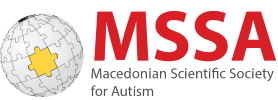


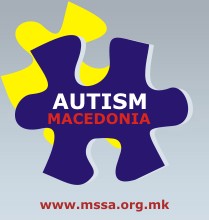
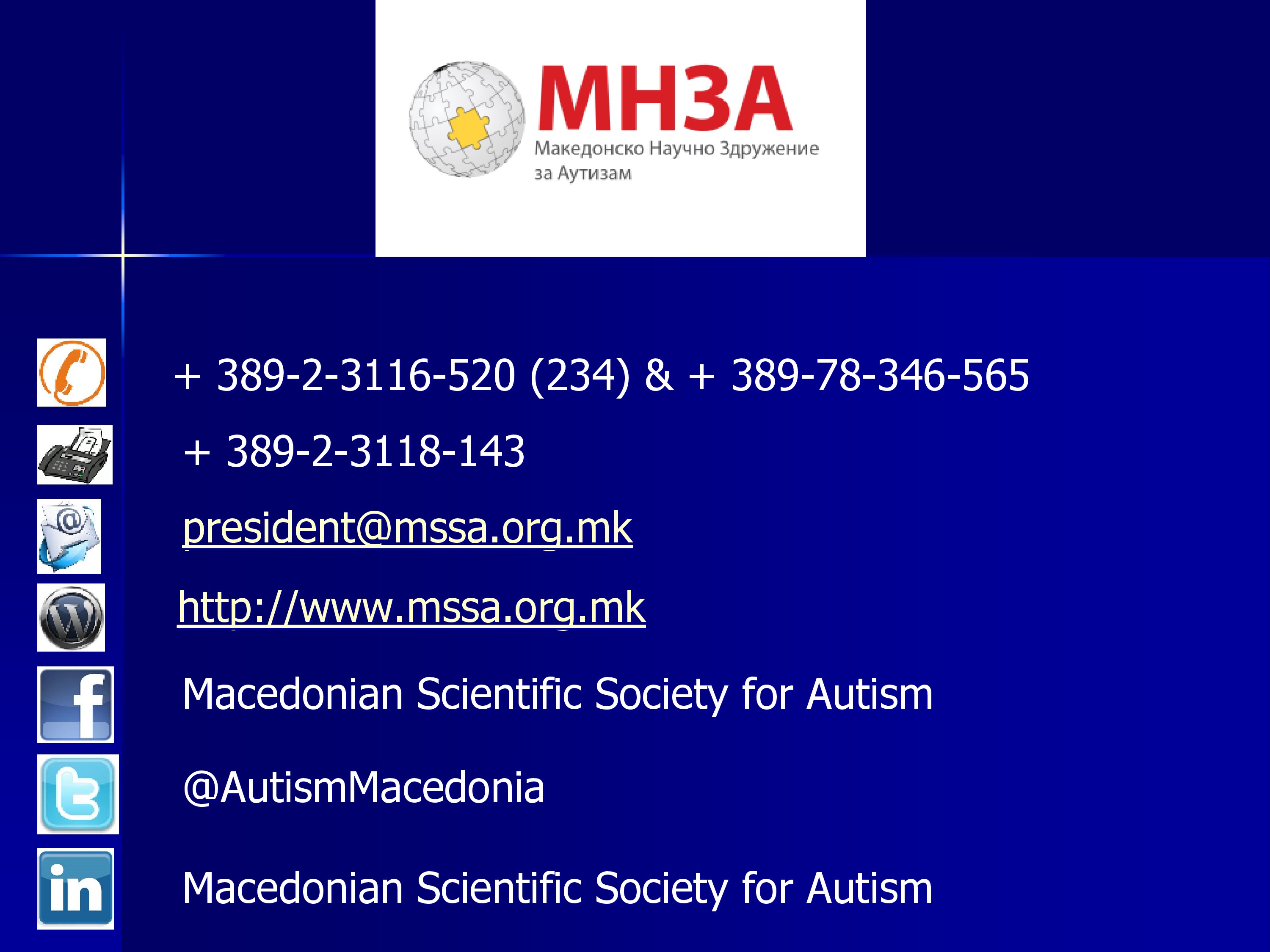
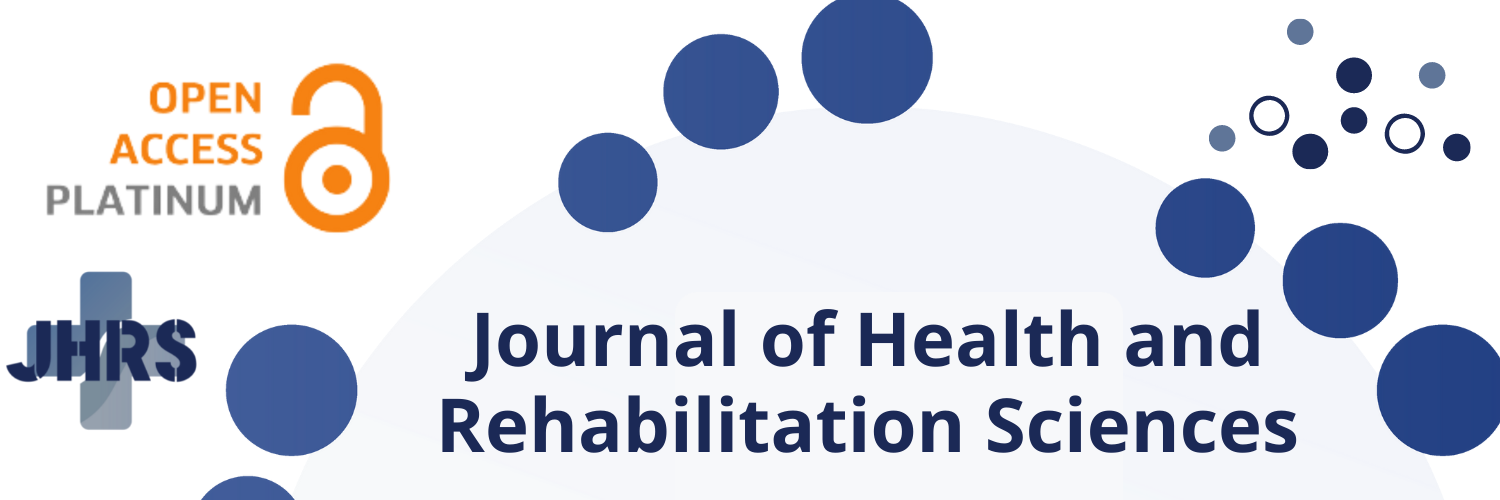
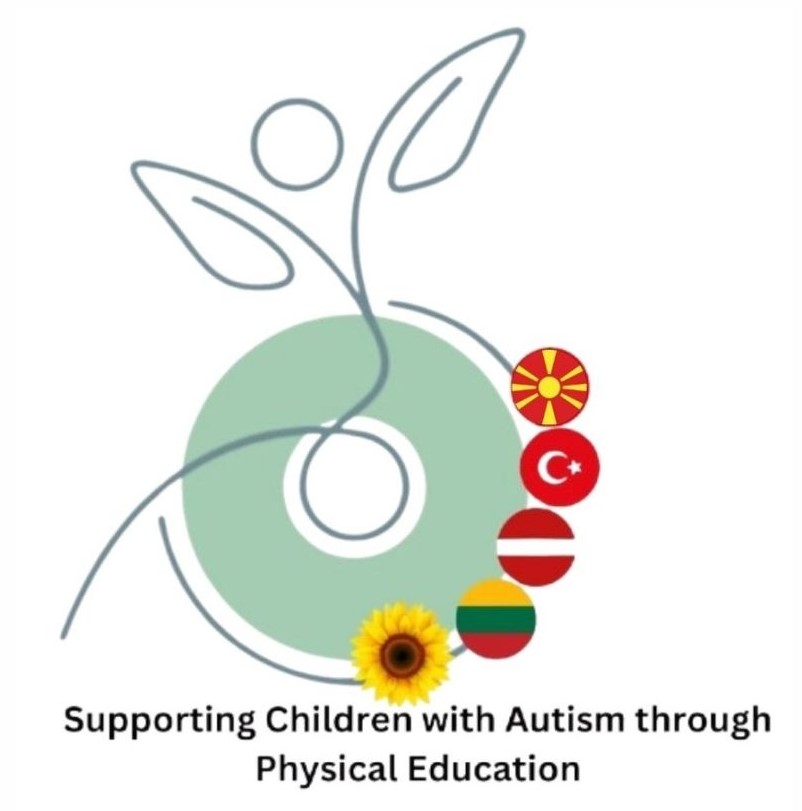
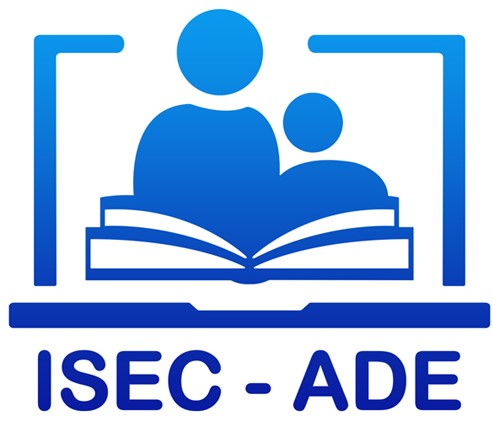
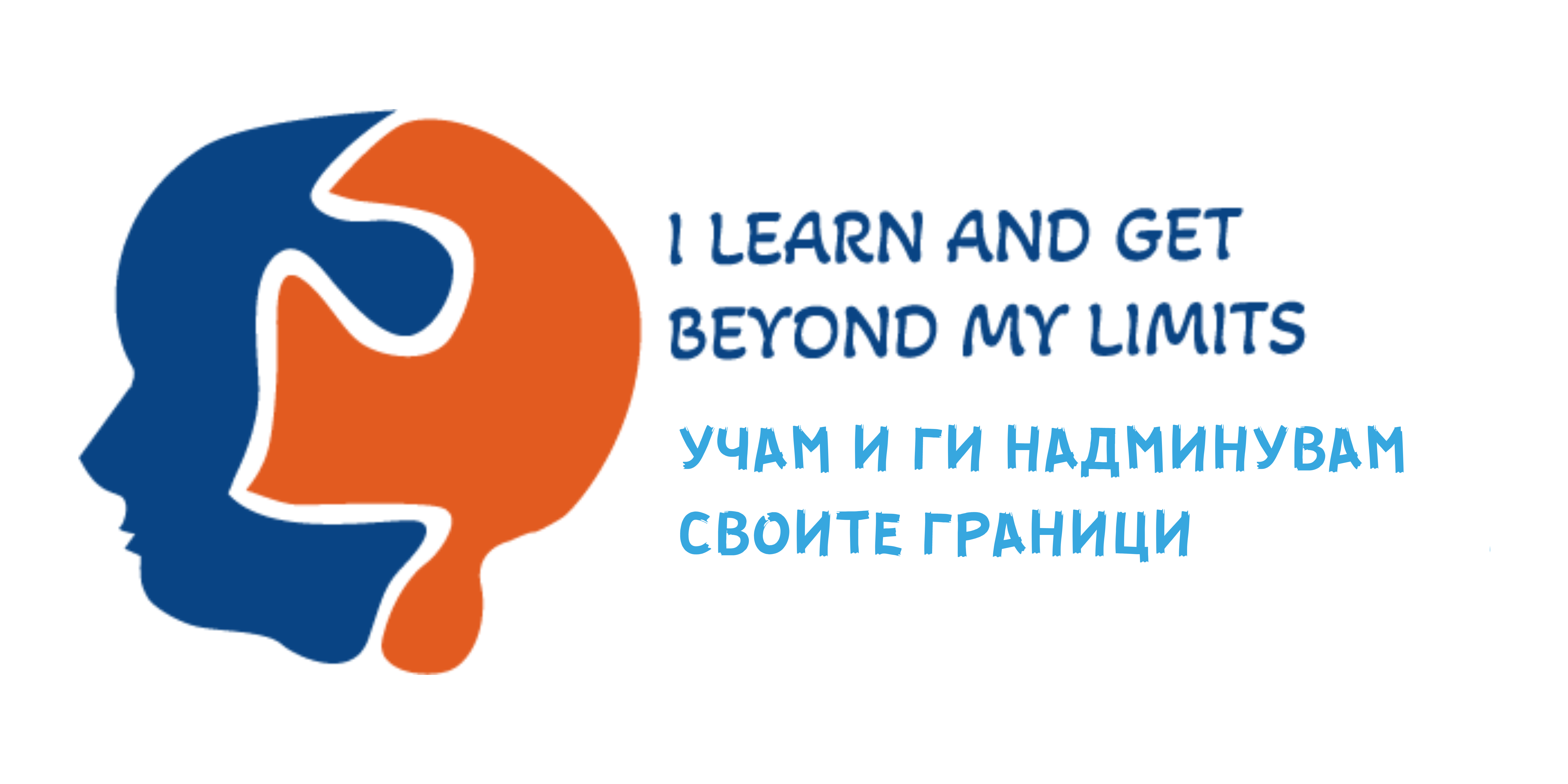
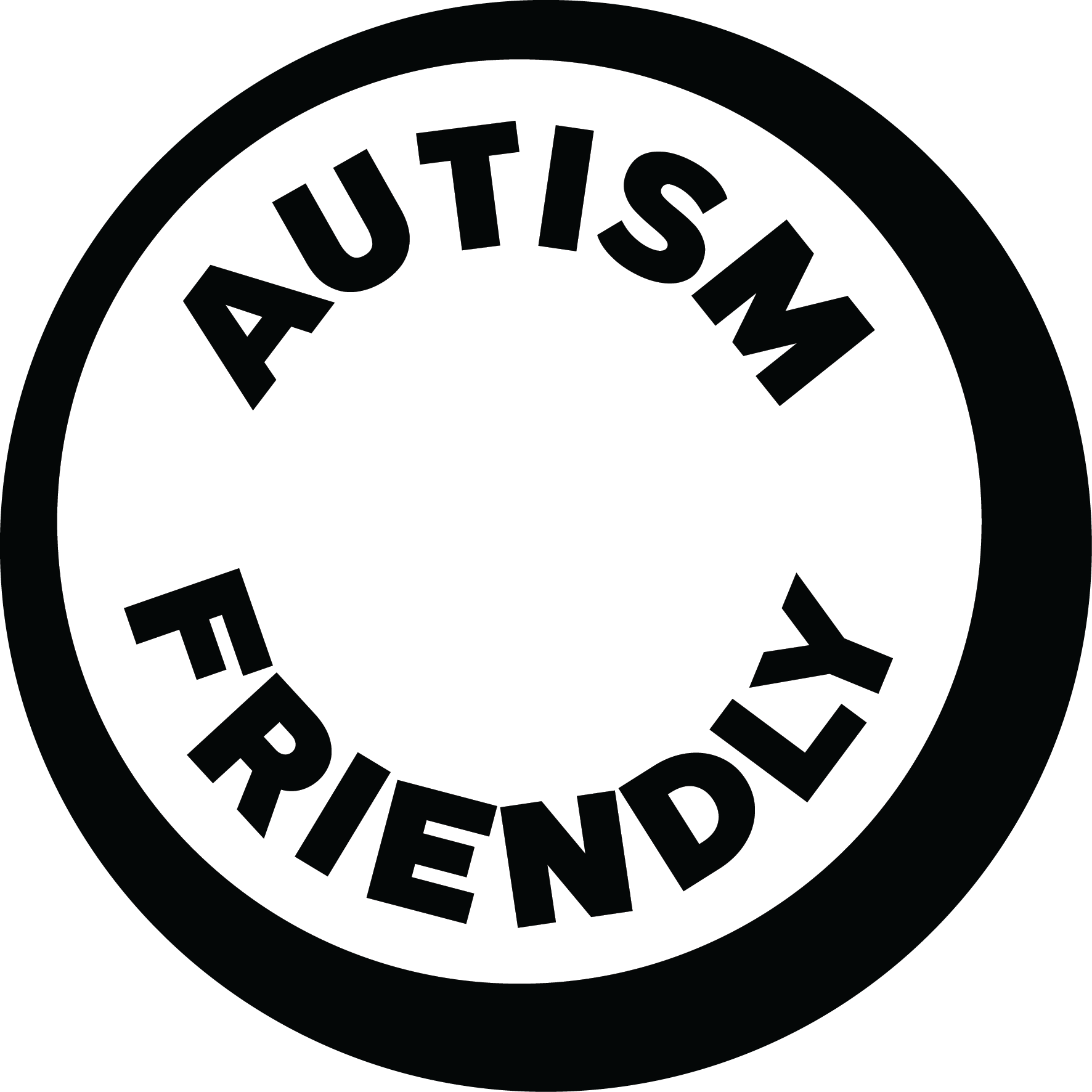
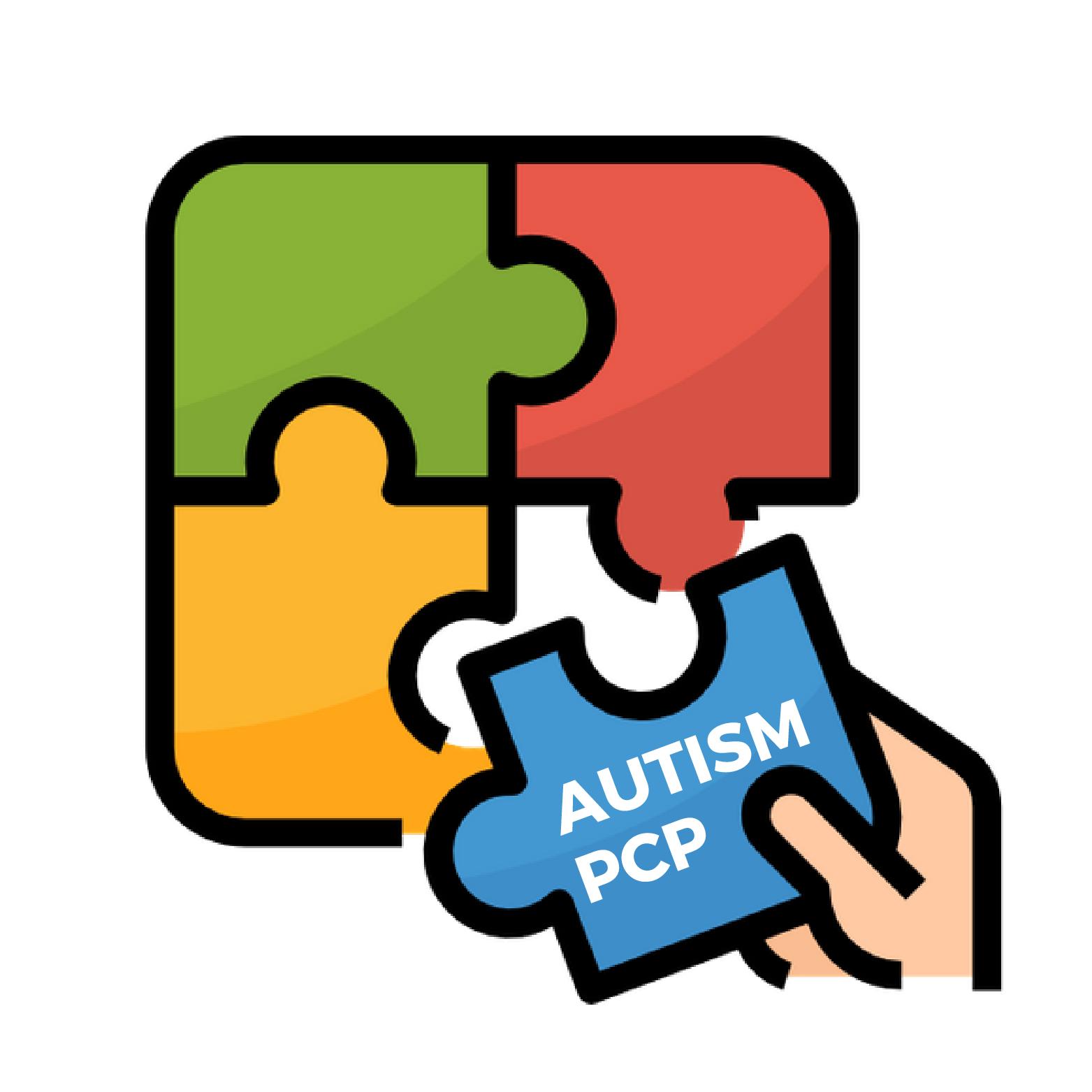
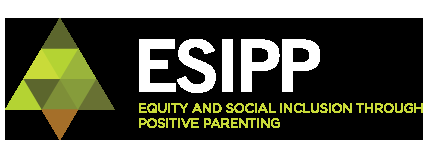
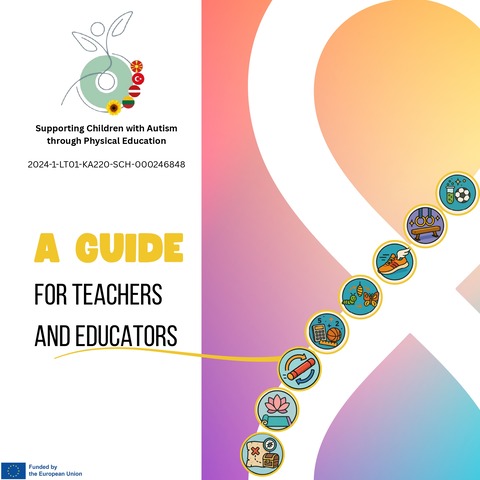
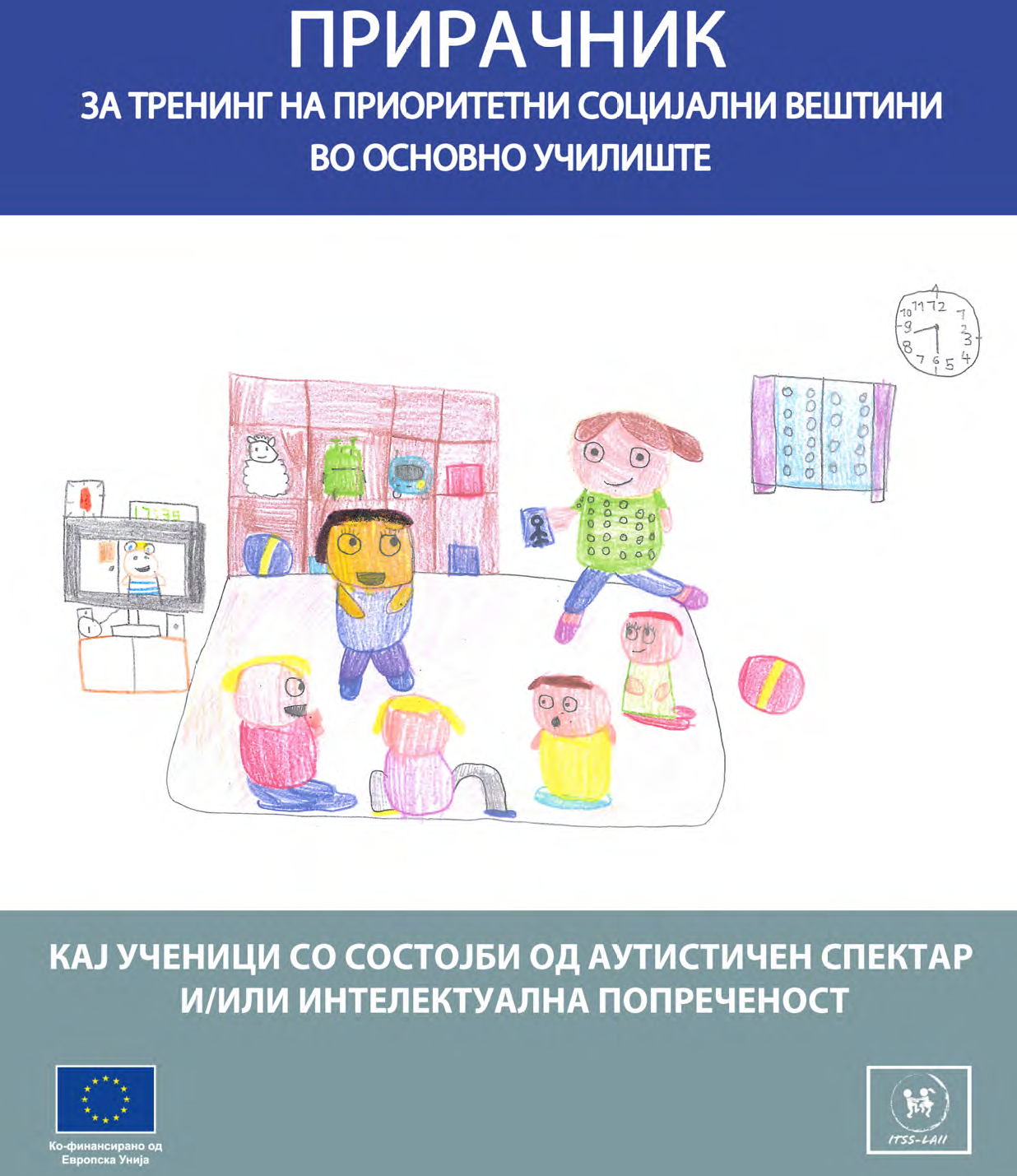
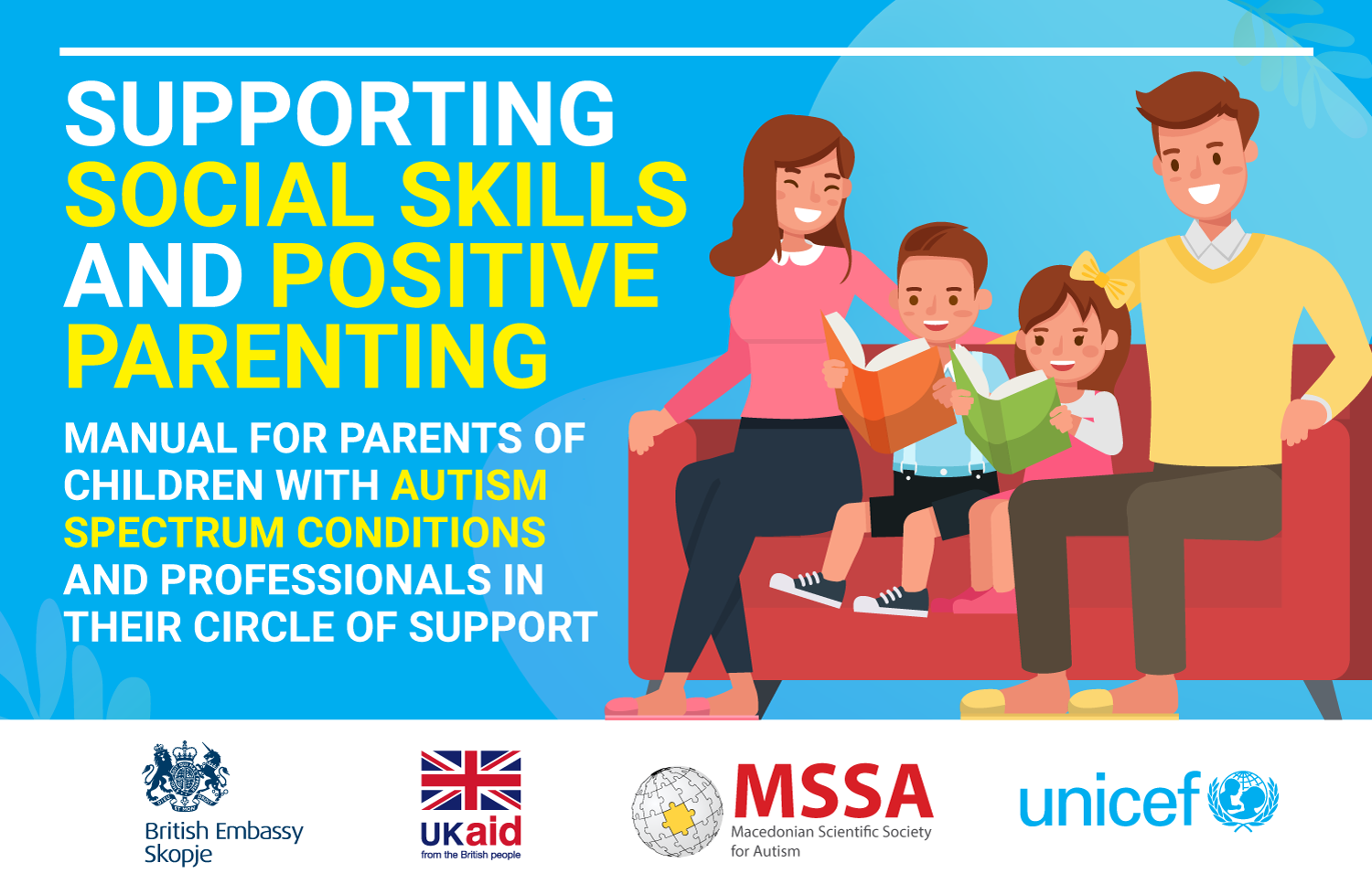
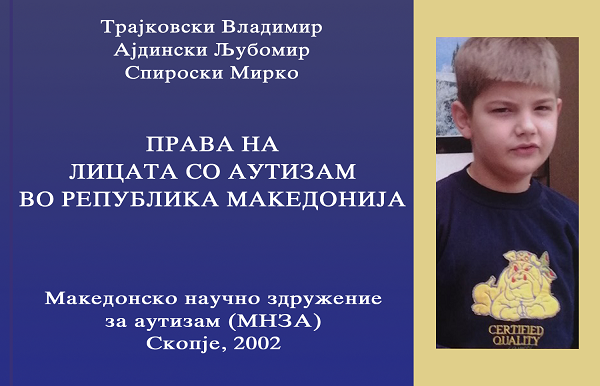
















 Users Today : 407
Users Today : 407 This Month : 4051
This Month : 4051 Total Users : 1516705
Total Users : 1516705 Views Today : 471
Views Today : 471 Total views : 5924275
Total views : 5924275